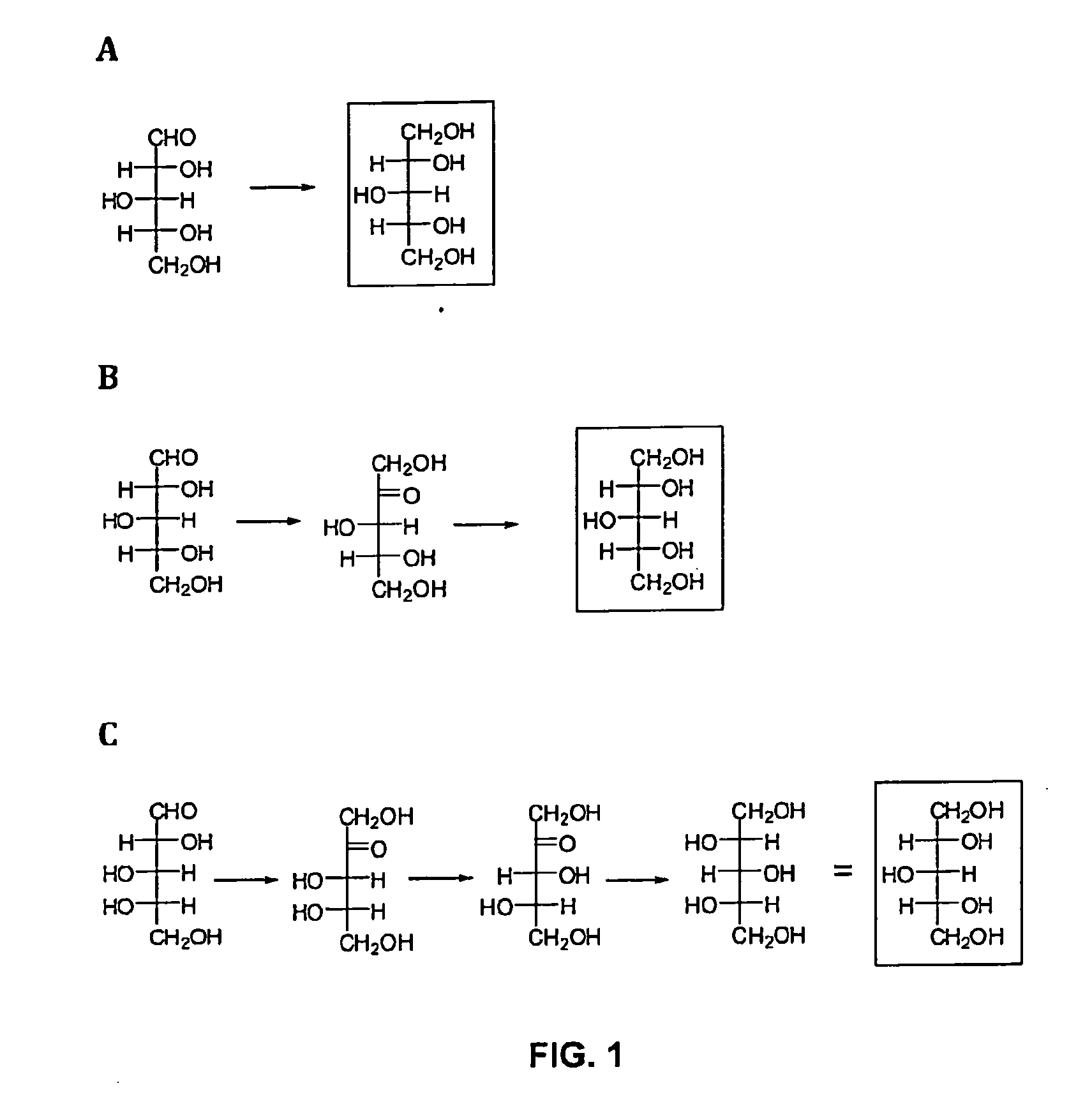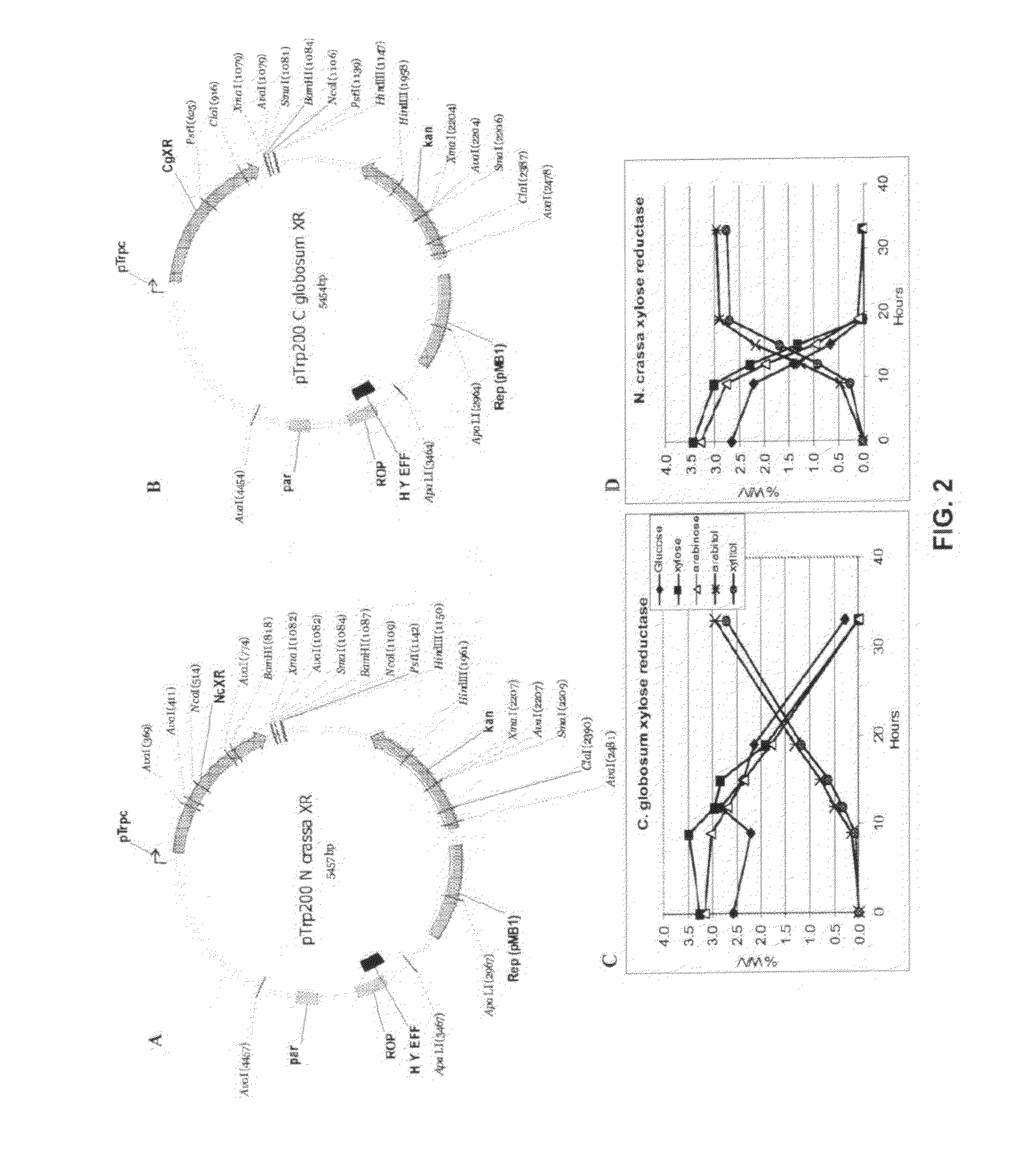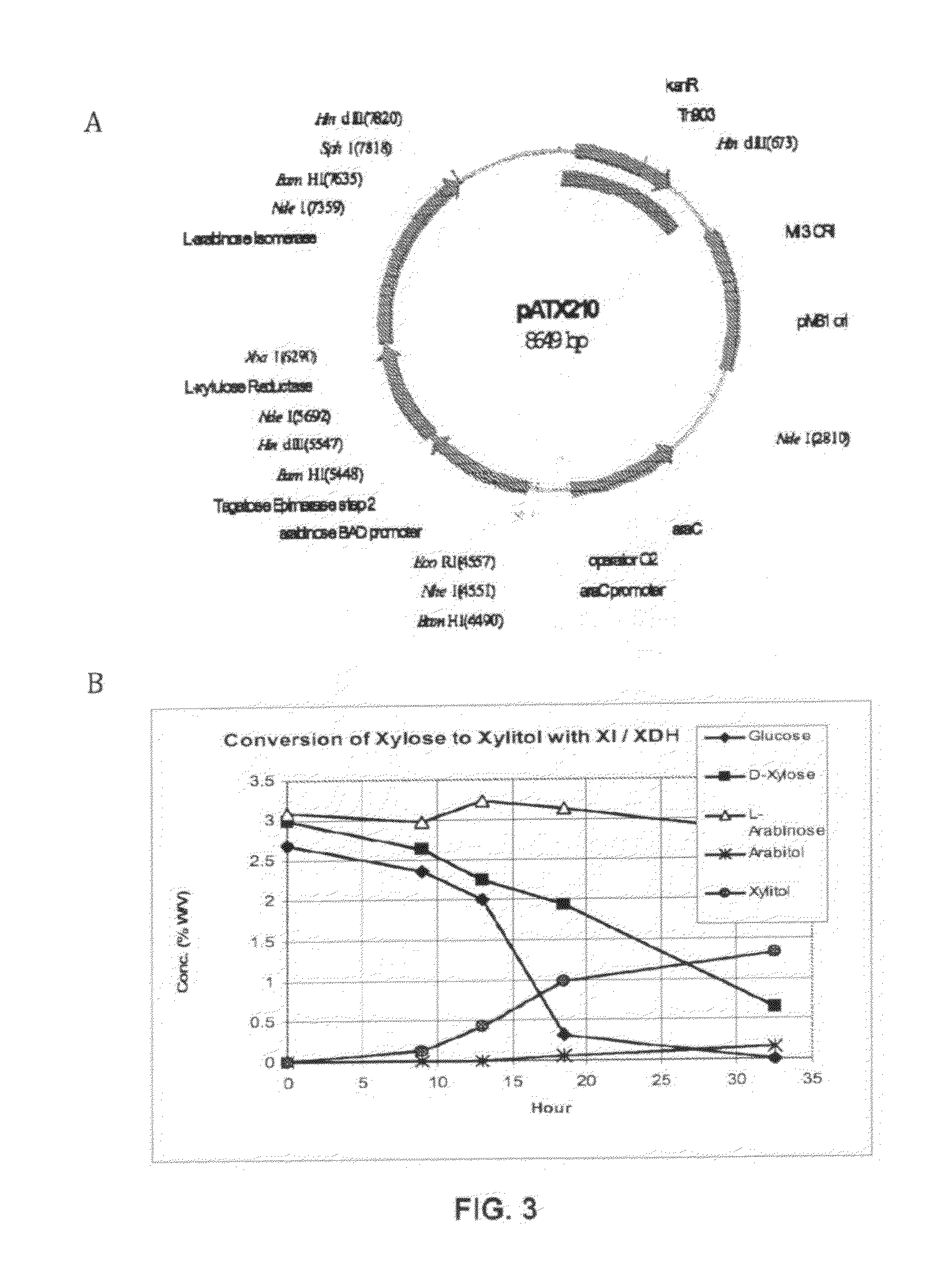Production of xylitol from a mixture of hemicellulosic sugars
- Summary
- Abstract
- Description
- Claims
- Application Information
AI Technical Summary
Benefits of technology
Problems solved by technology
Method used
Image
Examples
Embodiment Construction
[0054]I. Materials and methods are described to produce xylitol by several routes for example either as a direct co-product of a biorefinery or ethanol facility, or produced as a stand-alone product using, e.g. ethanol waste streams.
A. Conversion of Xylose to Xylitol via Xylose Reductase.
[0055]1. Use D-Xylose Reductase on Arabinose-Depleted Feedstock; in an Arabinose Utilizing Organisms; Xylose Reductases Will Reduce Arabinose:
[0056]Two organisms designated ZUC140 and ZUC166 can accomplish this. Xylose can be converted to xylitol at a high efficiency, but also produces arabitol from arabinose (tested at 50:50 ratio).
[0057]One way to convert xylose to xylitol is directly through the use of a xylose reductase as depicted in FIG. 1A (Pathway A). Several xylose reductase genes had previously been cloned into E. coli expression vectors, expressed, and tested for ability to convert xylose into xylitol. Most genes are expressed and very active in constitutive expression systems within stra...
PUM
 Login to View More
Login to View More Abstract
Description
Claims
Application Information
 Login to View More
Login to View More - R&D
- Intellectual Property
- Life Sciences
- Materials
- Tech Scout
- Unparalleled Data Quality
- Higher Quality Content
- 60% Fewer Hallucinations
Browse by: Latest US Patents, China's latest patents, Technical Efficacy Thesaurus, Application Domain, Technology Topic, Popular Technical Reports.
© 2025 PatSnap. All rights reserved.Legal|Privacy policy|Modern Slavery Act Transparency Statement|Sitemap|About US| Contact US: help@patsnap.com



